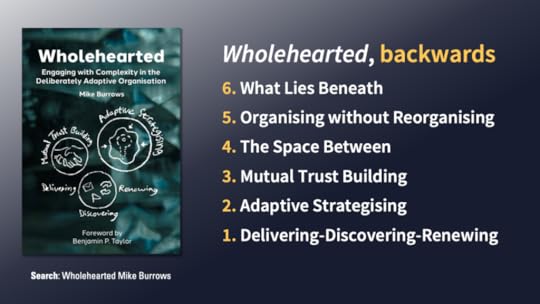Engage with the organisation *as it actually is*

Previously: Wholehearted, backwards Next: OODA loop takeaways
[This post was first published on LinkedIn here – comments there welcome!]
I keep promising that my next post will be called “OODA loop takeaways”, but it will wait. Meanwhile, something else I keep finding myself saying:
If you fail to engage with how the organisation is actually experienced by people, you aren’t really engaging with the organisation at all.
Managers and practitioners alike can easily fall into the trap with engaging not with the organisation but with some abstraction thereof – one person’s view (perhaps the official view) of its structure or process, or something even further removed from reality, some idealised, future-state design.
This is not engaging with the organisation as it actually is. I think we can all accept that this is true for the process diagram; there will always be nuances that it won’t take into account. So let’s look instead at structure. Even allowing that no one expects an org chart to describe the organisation’s process (that’s not its job), I’ve never seen one that adequately captures all of the relationships of accountability, belonging, and identity that different people experience. That’s not to say that the org chart isn’t useful, but let’s not pretend that people aren’t dealing with competing loyalties, with having to make difficult decisions about how to prioritise their investment in each relationship, even with reconciling the different understandings of the organisation and its business environment that each group or stakeholder represents.
So when I say to engage with how the organisation is actually experienced by people, I don’t just mean listening to complaints. I mean helping people make sense of it all – what’s working, what’s not working, what’s possible, and what could be made possible. That’s a big task, so let’s look at it from a range of different angles. As a followup to and in the manner of my previous post, Wholehearted, backwards, let’s go backwards through Wholehearted, a chapter at a time:
Chapter 6. What Lies Beneath: Whether on their own or banding together, given the opportunity, what constraints on the organisation would people choose to work on? For they themselves and for those who benefit from their work, what would that be like? What new possibilities might it enable? Whose needs would the organisation be meeting? What new stories would they then be able to tell? If the organisation is to engage with some overall challenge and meet it well, on how broad a front do we need this to be happening? So, who’s invited, and what range of experiences does that bring to the conversation?
Chapter 5. Organising without Reorganising: How do people experience change in this organisation? What is it like to leave a team? What is it like to join one? As teams form or change significantly in their constitution, how quickly and how automatically do the basics of coordination, organising, and learning establish themselves? And addressing an understandable source of deep frustration, for teams of limited lifespan, how do we ensure that their learning doesn’t go to waste?
Chapter 4. The Space Between: To the above-mentioned relationships of accountability, belonging, and identity, how are they experienced? And how do they actually function? How do they maintain the coherence between levels of organisation without limiting each other’s options unduly, or setting up expectations that can’t be met?
Chapter 3. Mutual Trust Building: In a similar vein, how do people experience the relationship between delivery and strategy? How does each aspect open itself up to the other so that decisions on either side are made with adequate context? How does that manifest itself in terms of presence, availability, and so on? How are each of those experienced? Likewise trust and trustworthiness: are people and groups generally trusted to meet their commitments and to retain responsibility for their respective domains, and when things aren’t going well or the unexpected happens, do the right people get to know about it quickly enough? And when it all goes wrong?
Chapter 2. Adaptive Strategising: What opportunities do people and the groups they identify with have to shape their respective futures? What opportunity is there to explore the way individual or group identity constrains those conversations? What, rightly or wrongly, is out of bounds? And how do people experience any imbalance between work that is delivery-related versus work that is more developmental?
Chapter 1. Delivering-Discovering-Renewing: Last but not least (remember we’re going backwards here), how is the work experienced day to day? What’s it like? What could it be like? Referring back to some of the basics – the work itself, how it is coordinated, and how it is organised – how are each of those experienced, and how much of those experiences are explained by the relationships between them?
The Deliberately Adaptive Organisation, the VSM-inspired model at the heart of Wholehearted is rich source of such questions, an aid to participatory enquiry, and an aid thereby to generative change. It is not a prescription that you roll out; it is a descriptive model, a framework, a way of making new sense of one’s and one’s colleagues’ experiences of the organisation. From there to the coherent action on a broad front alluded to above is not a big step, and if your organisation wants to meet its challenges well, that’s what it needs.
Wholehearted: Engaging with Complexity in the Deliberately Adaptive Organisation hit Amazon earlier this month. You can find both print and Kindle editions on amazon.co.uk, amazon.com, amazon.de and other Amazon sites around the world. The e-book is also available on LeanPub, Kobo, Apple Books, and Google Play Books.
Previously: Wholehearted, backwards Next: OODA loop takeaways



